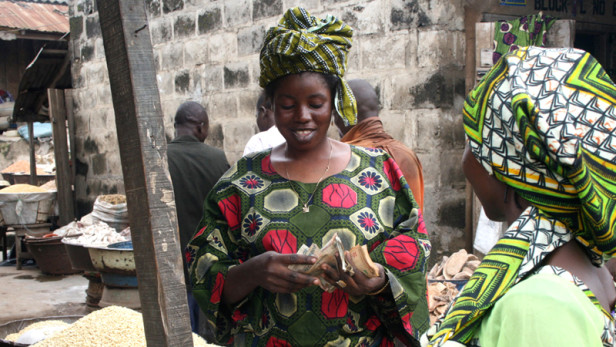
Insurance plays a vital role in economic development by helping individuals and families manage risk and deal with uncertainty. Women are at the forefront of economic development in many markets, representing not only an engine for growth but a large potential market for insurers. They are also a high-potential salesforce for insurers, with particular skills in developing long-term client relationships.
The International Finance Corp, AXA and Accenture have partnered to produce SHEforSHIELD: Insure Women to Better Protect All, a comprehensive report on the state of the women’s insurance market globally — and particularly in developing markets. This report looks at the size and growing importance of this market for the insurance industry worldwide, but it also explores the need for insurance as part of the social safety net for women entering the workforce, accumulating assets and establishing their own enterprises.
The report estimates that women’s individual spending on insurance premiums will grow to $1.4-1.7 trillion by 2030 — three times its current size. Women entrepreneurs are now one-third of the world’s business owners, and they are looking for ways to expand their businesses and contribute more to the wealth and security of their families. Despite this, relatively few insurers are targeting the women’s market.
Women play multiple roles in society; they are conduits for social change and economic progress. Yet, to date, limited research has been done on the women’s market — particularly as it pertains to the type of products that women want and need.
This detailed report looks at the experiences and economic situations of women in 10 emerging markets: Brazil, China, Colombia, India, Indonesia, Mexico, Morocco, Nigeria, Thailand and Turkey.
These countries were selected because the socio-economic advances made by women in these markets are expected to further increase the need for insurance to protect their growing assets and independence. In addition, insurance growth is outpacing that in developed markets.
While there are significant differences from market to market, some key “big picture” themes emerge from the report:
• Women want protection and peace of mind not only for themselves, but for their husbands, children and parents. They do not want to be a burden; they want short-term simplicity and long-term stability, advice and support.
• Women’s needs and preferences differ by segment and life cycle events, requiring insurers to tailor products and services. There are five or six tipping points during a woman’s life, at which she makes a significant number of her insurance-related decisions: marriage, entering the workforce, buying a house/car, having children, divorce/widowhood and retirement.
• Insurers need to leverage digital distribution channels — particularly social media networks and mobility— to increase awareness and communicate with women clients, as they gain access to digital services to manage both their family and professional agendas.
• Partnerships with governments, nongovernmental organizations, women’s associations and other private-sector players can be developed to expand access to insurance for women.
The report also identifies some steps that insurers should be taking to address the needs of the women’s market. In particular, insurers should:
1. Build intelligence on women’s insurance needs. This means gathering data that is specific to women from the insurance product development and marketing chain. But it also means collecting new information on women’s demographics and socioeconomic trends, and behaviors. This allows insurers to identify market segments and develop suitable marketing and distribution strategies.
2. Create the right products and value propositions for each market. Insurers can conduct in-depth focus groups for each segment to gain a better understanding their needs and of the cultural nuances that distinguish each group (as well as the similarities that unite them). Women in some markets, for example, indicated a desire for products that combine protection for the elderly as well as features that support saving for children’s education.
3. Improve distribution to women clients. Insurers need to get closer to the women buying their products. To do this, they can engage and empower more women in the insurance salesforce and within other departments of insurance companies, including actuaries, product designers, marketers, and middle managers, to improve their abilities to understand the women’s market. They can also provide gender-sensitive training to the sales force to better engage women clients. And, as mentioned, using digital channels can help insurers reach women whose own mobility might be restricted because of economic or social constraints.
For insurers, success in addressing the women’s market will also require collaboration. Insurers will need to engage with other stakeholders — from governments to NGOs to other service providers — to help women overcome constraints in accessing insurance products. Insurers can work with these other organizations to increase financial literacy, market to a female-majority workforce, and build upon existing community relationships to build their own brand and trust.
By developing and marketing the products women need — and integrating women into their own workforces — insurers can support global economic development and the empowerment of women worldwide. In doing so, they can increase their own revenues and financial performance, providing a win for all concerned.
Insurance plays a vital role in economic development by helping individuals and families manage risk and deal with uncertainty. Women are at the forefront of economic development in many markets, representing not only an engine for growth but a large potential market for insurers. They are also a high-potential salesforce for insurers, with particular skills in developing long-term client relationships.
No comments:
Post a Comment